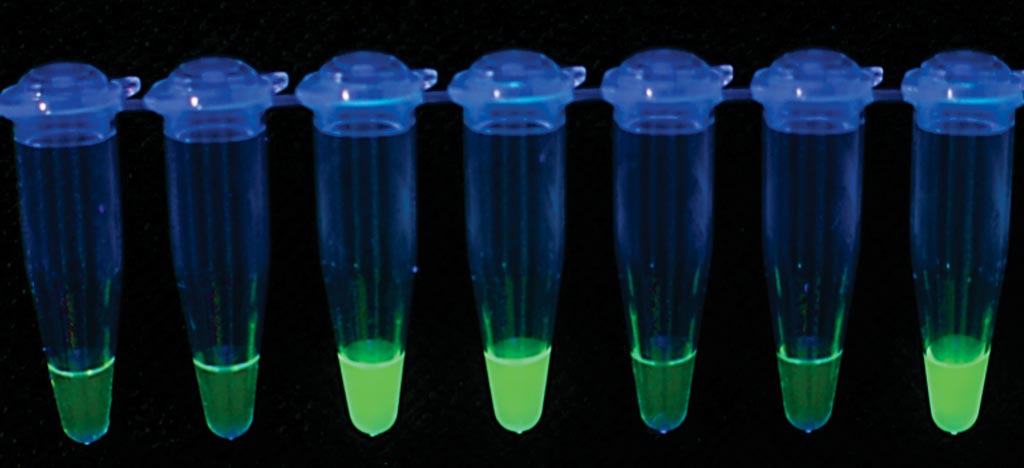TB-LAMP Assay Evaluated in Reference Labs
By LabMedica International staff writers
Posted on 19 Apr 2018
Smear microscopy, the first line in tuberculosis (TB) detection, has a low and variable sensitivity of 30% to 70%. Conventional culture on solid media has a sensitivity of 80% to 90%, but requires two to eight weeks for a result.Posted on 19 Apr 2018
The use of molecular methods such as nucleic acid amplification tests (NAAT) may promise faster results with high sensitivity and specificity. Novel loop-mediated isothermal amplification (LAMP) is an attractive diagnostics platform because it takes less than two hours to perform, requires minimal instrumentation, and generates a fluorescent result that can be detected with the naked eye.

Image: Results of a LAMP test showing positive samples that emit green fluorescence (Photo courtesy of Foundation for Innovative New Diagnostics).
In a large multicenter study led by those at the Foundation for Innovative New Diagnostics (Geneva, Switzerland), two sputum samples were collected from participants with TB symptoms in reference laboratories in Peru, South Africa, Brazil, and Vietnam. Each sample was tested with TB-LAMP. The reference standard consisted of four direct smears, four cultures, and clinical and radiological findings. Individuals negative on conventional tests were followed up after 8 weeks. The Xpert MTB/RIF assay was performed on fresh or frozen samples as a molecular test comparison.
The teams enrolled a total of 1,036 adults with suspected TB between January and December 2012. Among 375 culture-confirmed TB cases with 750 sputum samples, TB-LAMP detected 75.6% (95% confidence interval (CI) 71.8–79.4%), including 97.9% (95% CI 96.4–99.4%) of smear-positive TB samples and 46.6% (95% CI 40.6–52.7%) of smear-negative TB samples. Specificity in 477 culture-negative participants not treated for TB (954 sputum samples) was 98.7% (95% CI 97.9–99.6%). TB-LAMP test results were indeterminate in 0.3% of cases.
The authors concluded that the finding in this study that laboratory performance of TB-LAMP approaches that of Xpert MTB/RIF, further studies are recommended in settings of intended use to evaluate these expected benefits. The use of a manual technique may give TB-LAMP the potential to enter the market at a lower cost than its automated counterpart. The study was published in the March 2018 issue of the journal International Journal of Infectious Diseases.
Related Links:
Foundation for Innovative New Diagnostics













